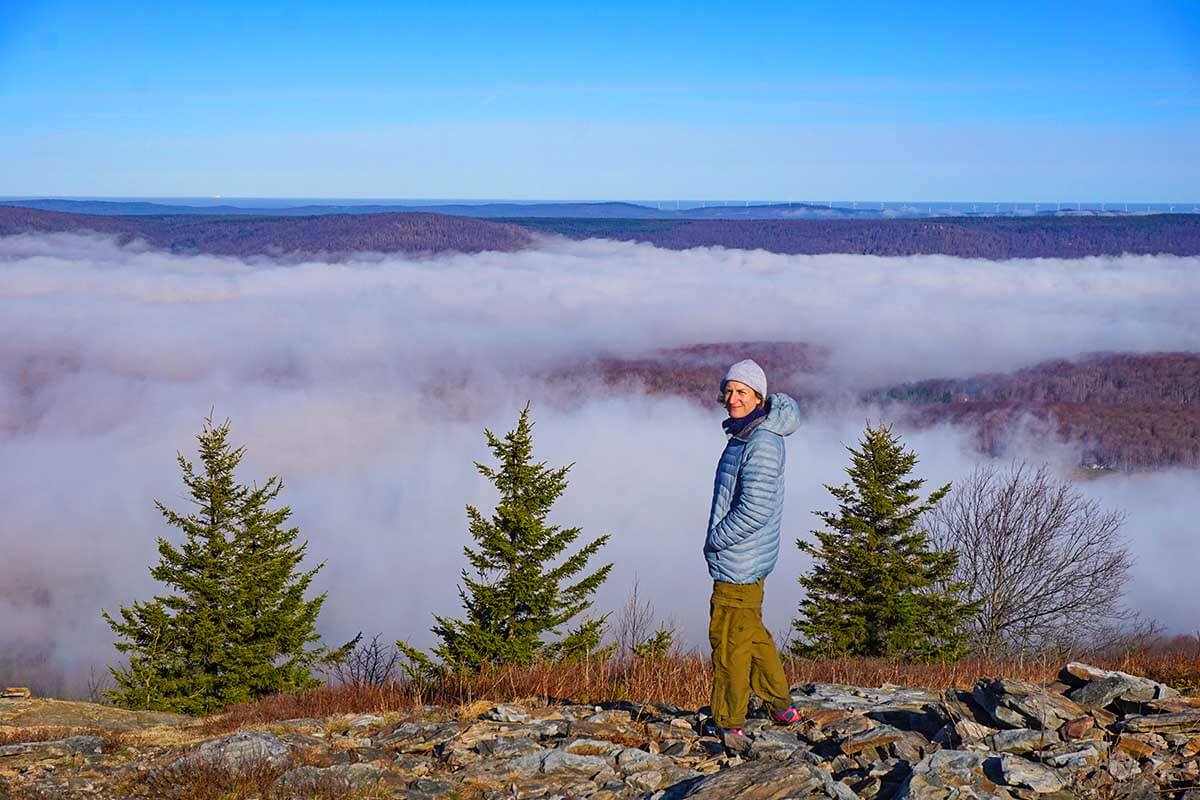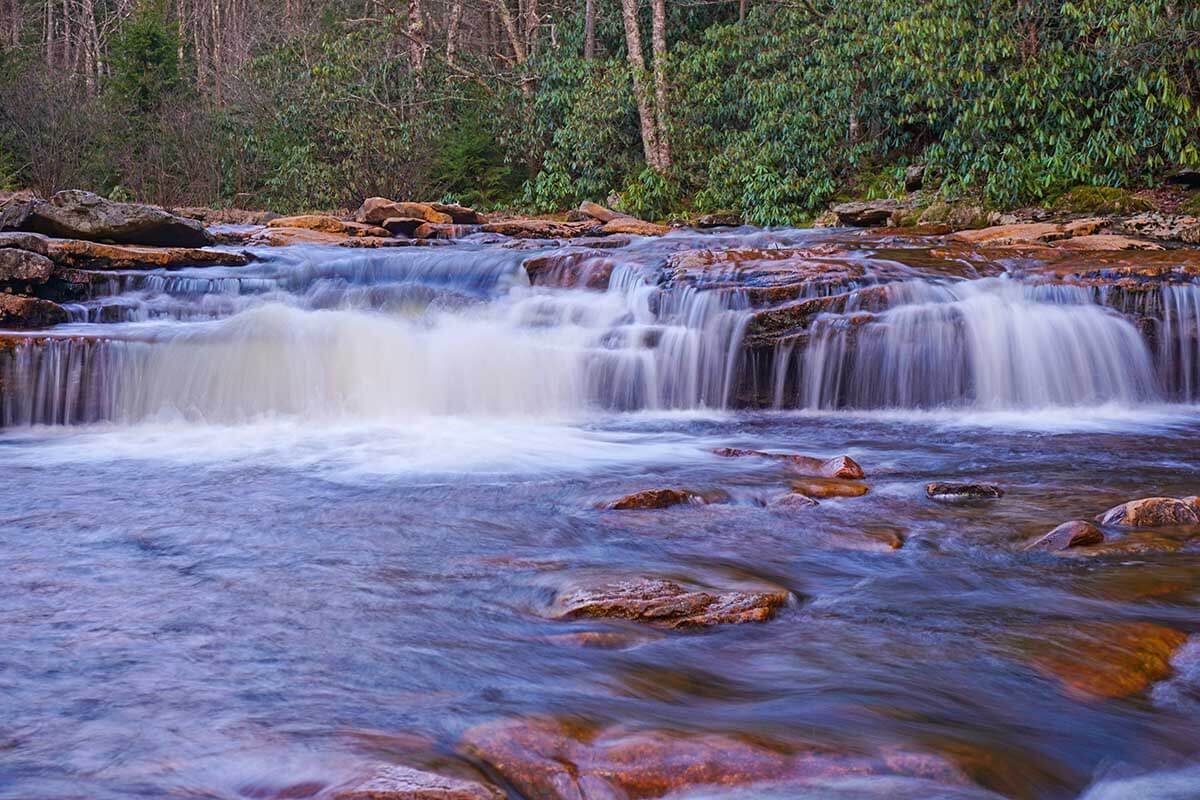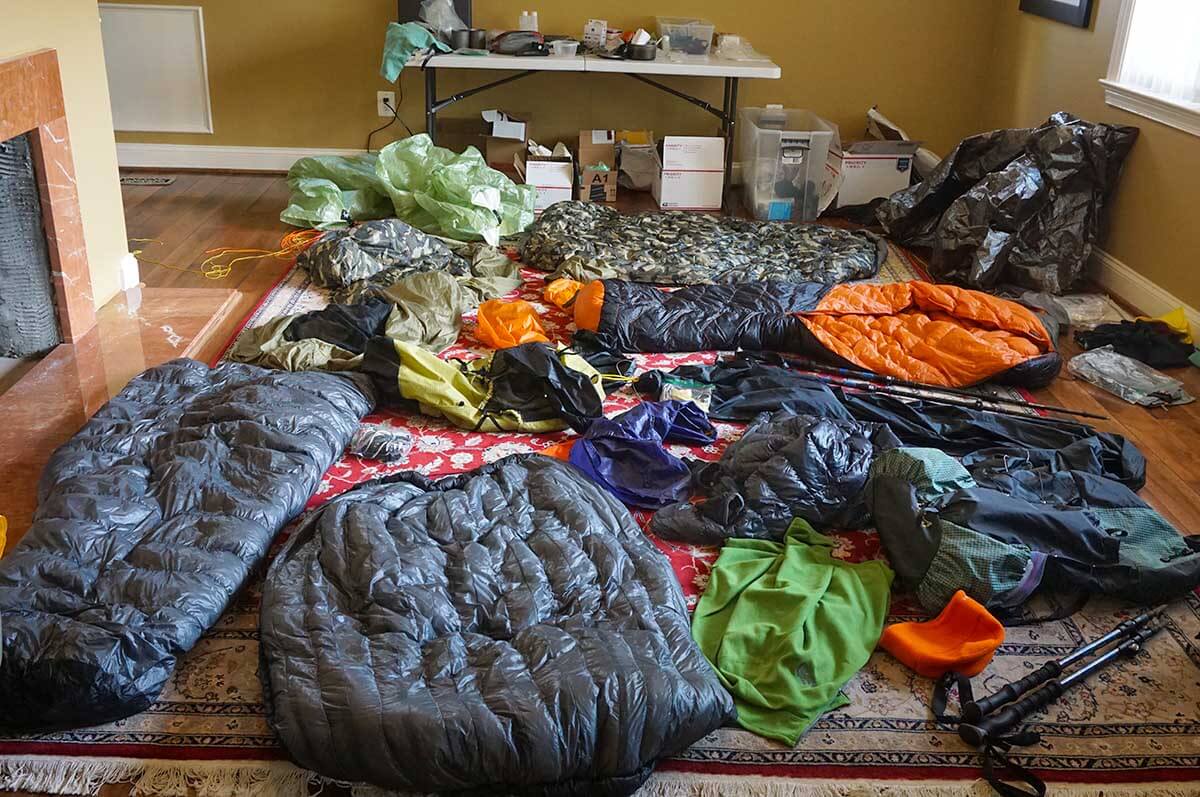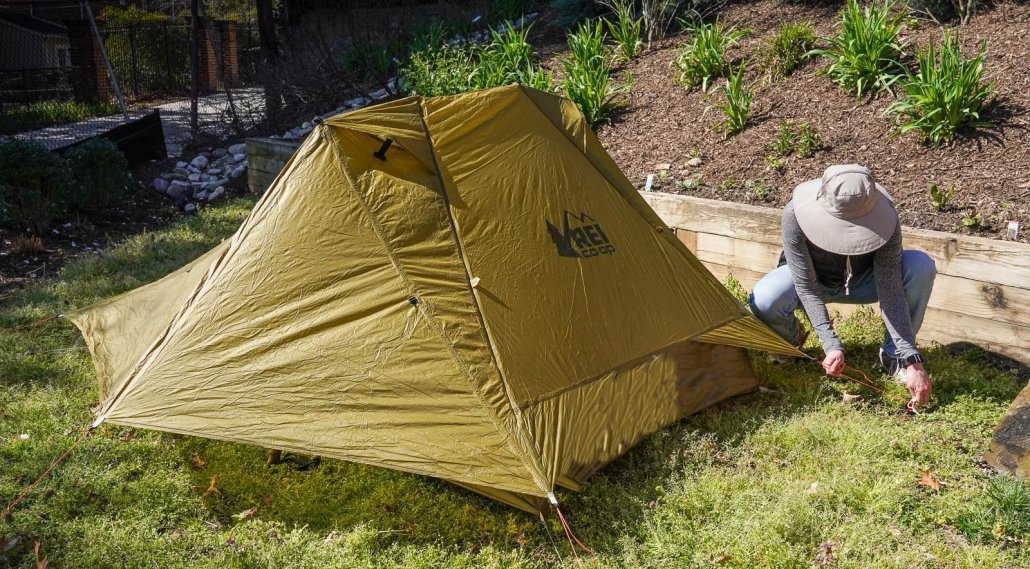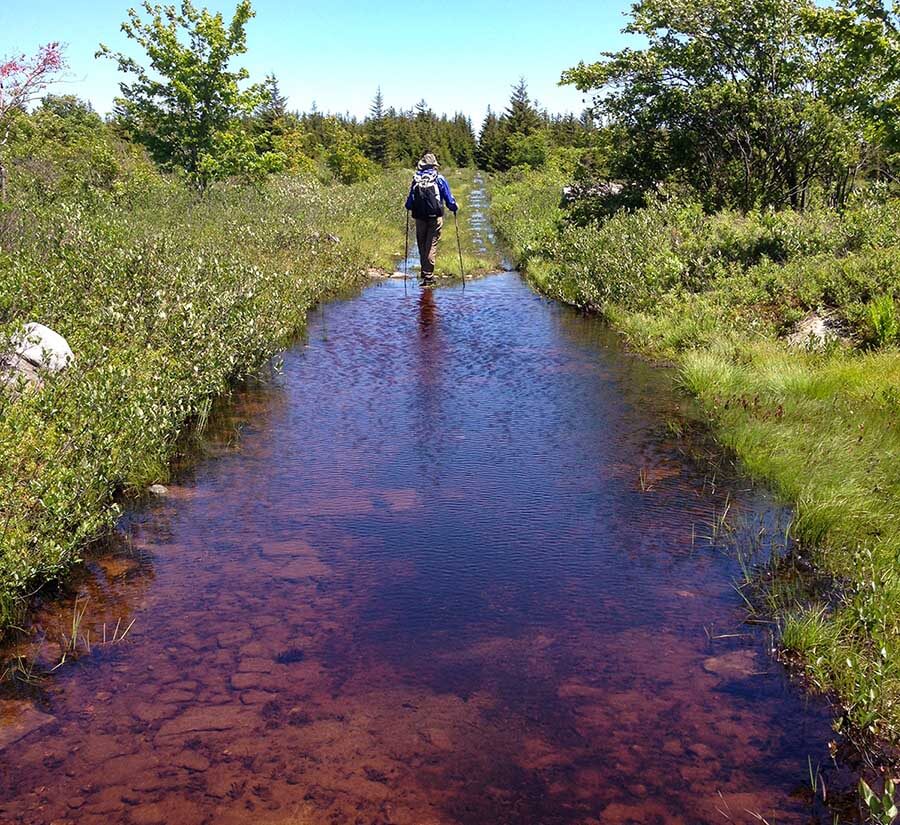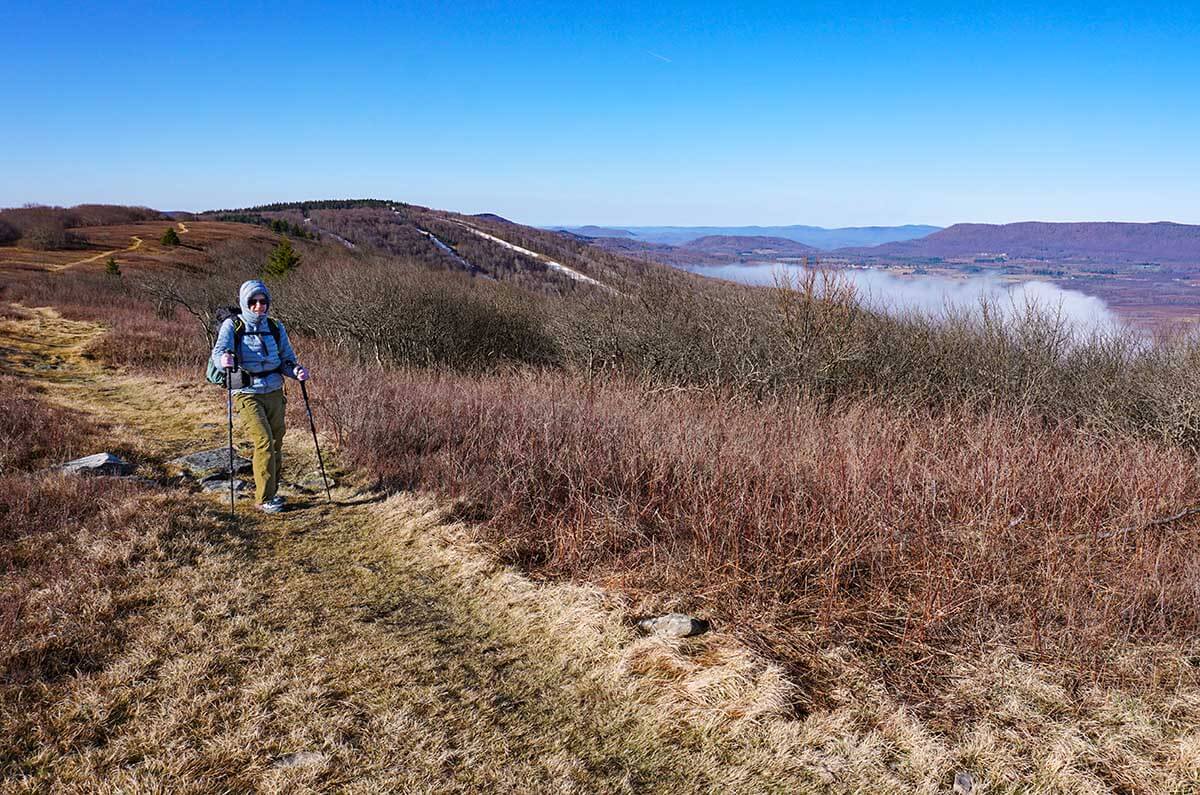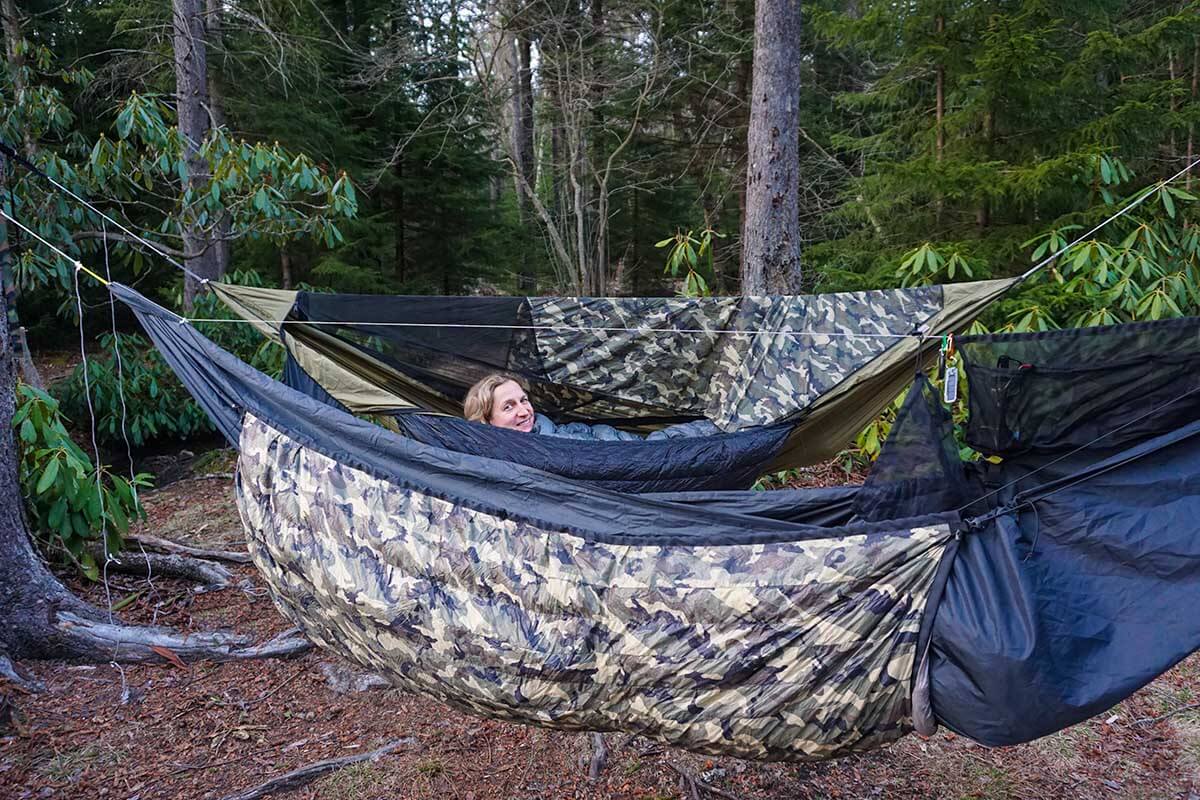The Shakedown Hike | Ensure Success on your Big Backpacking Trips
An early spring shakedown hike is key to the success of our upcoming backpacking trips, the big trips that really matter! And of course, this is the place to make mistakes and learn — not on your big trips! As such, even though we are seasoned backpackers, each year we look forward to our annual 3-day shakedown hike. We thought others might be interested in hearing more details on how we plan and execute a shakedown trip — possibly with an eye to incorporate some version of it into their own backpacking routine. As they say, you never regret up-front planning and practice.
[Lead photo above: The author overlooking an entirely misted-in Canaan Valley on a frosty spring morning.]
For us on the East Coast, early spring is the perfect time to get out for a shakedown hike in preparation for the upcoming year of backpacking. In spring, the weather is often cold cold and wet, but sometimes warm — that is a good blend of challenging conditions to test gear and technique.
No crowds at lovely campsites like this are definitely a benefit for early season shakedown trips.
4 Steps for a Backpacking Shakedown Hike
- Assess Gear and Food
- Day Hike & Backyard Testing (Before your Shakedown Trip)
- Executing your Shakedown Trip
- Post Trip Review, What Worked and What Didn’t Work
Useful Resources for a Backpacking Shakedown Hike
- GEAR: Ultralight Backpacking Gear List | 9 Pound. Top ranked for over a decade. This list will give you some great ideas on how to significantly lighten your pack!
- FOOD: 2019 Best Backpacking Food | simple and nutritious and Backpacking Food List | Simple and Nutritious for 7 days will help with food planning and nutrition
- TRAINING: Quick and Efficient Training for Backpacking and Hiking Get fit for hiking in just two training days per week. No BS. Solid tested training techniques.
1 | Assess Gear and Food
Before you get out on the trail, take some time to assess what to bring. This is going to be a time to try out cool new gear you’ve been wanting to use. It’s also an opportunity to see if the gear you have is the right gear. For instance, is your sleeping bag warm enough?
- Look over your gear list (yes, make a list) and see what you might need. Gear does sell out, and the best gear sells out first. If you are buying from a cottage manufacturer it can take weeks for them to ship once you have placed your order. They are small and don’t keep inventory in house so allow sufficient time to acquire what you need.
- If you need help with some gear ideas check out our top ranked Ultralight Backpacking Gear List | 9 Pound. It may give you some ideas on how to significantly lighten your pack!
- Figure out what quantities and what food to bring. For ideas check out our 2019 Best Backpacking Food | simple and nutritious and Backpacking Food List | Simple and Nutritious for 7 days.
Backyard setup of the new 2020 REI Co-op Flash Air 2 Tent. It’s under two pounds for a 2 person tent! Practice, practice, practice until you can do this easily and quickly. You’ll thank yourself when a storm is rolling in and you have limited time to get your tent up and scoot inside to be safe and dry.
Choose to go out in particularly cold and wet or hot conditions to see how your gear does.
2 | Day Hike & Backyard Testing (Before your Shakedown Hike)
- Set up your gear before you go so you know it works. Head out into your backyard or local park and practice setting up your tent and sleeping pad/sleeping bag. Then put them all together to see if you have enough room, where you’ll store your gear etc.
- Choose a cold night to test new sleeping gear in your backyard. We have spent more time sleeping out in the backyard than we’d like to remember. It is a great way to know how your sleeping pad/bag will do. (30 miles from a trail head is a crappy place to test out new gear.)
- Ensure you have the electronics that you need. Items like USB batteries and communication devices need to be charged while navigational devices should have software downloaded before you head out. Definitely monitor battery drain on test hikes (or testing at home).
- Start a hiking training program so your hiking muscles are ready to go. We have a recommended training program Quick and Efficient Training for Backpacking and Hiking.
- Do some day hiking to test shoes, socks and trekking poles. It’s amazing how badly your hike will go if any of these pieces of equipment is not perfect. Use the exact same shoes, and socks you intend to bring on your big trips for the year!
- Test out your hiking clothes on a day hike to make sure your clothing is as good as you hope in cold, wind, rain, and sunshine. Be opportunistic here, choosing to go out in particularly cold and wet or hot conditions to see how your gear does.
Make sure you day hike in some challenging wet conditions. Pic of our “trail” after a torrential spring storm the night before.
3 | Executing the Shakedown Trip
Understanding your gear and abilities are two reasons to get out and hike. For beginner hikers, longer trips can be intimidating and the shakedown trip can provide a level of comfort for the big trip ahead. For expert hikers, the shakedown trip is your opportunity to try new gear or new techniques — and to test your training and fitness level. Below we list the top reasons for why we highly recommend a shakedown trip for all hikers, beginners and experienced.
- Get a sense of your hiking pace. How fast do you feel comfortable hiking and how much distance can you cover in one day? If this is your first trip, we would even encourage you to push a little beyond your expectation, try to include an extra long day. Usually, we plan to cover 40-45 miles with at least one 20-25 mile day in our spring shakedown trip.
- Evaluate new gear you intend to use on upcoming trips. For us, that often times means testing new light gear on the market or an item we want to test for an article or to include in one of our round-ups. Or it may be reacquainting ourselves with some gear that we haven’t used in awhile, like a harness for a canyoneering trip.
- Food options and recipes have come a long way from when we started hiking. A shakedown trip is a great way to try a new recipe or new bars on the market. You can also tweak your food options a bit to get it just a little more perfect.
- Make sure you are comfortable with your electronics. We are big fans of Gaia GPS and would recommend it to anyone heading out on any hike. Ditto for the Garmin inReach mini. A shakedown trip is a great way to test your comfort level with both of these items for in-field, real-use conditions.
- Battery drain assessment. Given the preponderance of electronics, monitor the battery drain/life of your smartphone, (GPS if you are using one), Garmin inReach, and other gear. Are they discharging too quickly? Also see how adequate your USB battery to charge electronics performs. Do you need a larger one?
- If you have a hiking partner for your big trip, the shakedown trip is a great way for the two of you to work out how you hike and camp together. Hiking styles can vary dramatically and knowing what to expect from your hiking partner on the big trip will allow you to focus on having the best trip possible.
- Other benefits: Shake off the winter blues, and enjoy the solitude. And for us east coast hikers, the cool temperatures make great hiking (& sleeping) conditions along with great spring wildflowers, no bugs, and great views with leaves off trees. And of course no crowds.
Put one in the win column: Hammocks on a spring shakedown hike. They did great, keeping us warm and toasty as the temps dropped to 20 degrees. Good to know for future trips that we can sleep comfortably in temps that low!
4 | Post Trip Review, What Worked and What Didn’t Work
And fix it before your next trip!
After you shakedown hike is finished, be sure to do a review of how the trip went.
- How did the gear perform? Do you need to add or subtract anything from your list? Even though we have a tightly honed list, we still review it after every trip to make sure nothing needs to be updated or replaced.
- How about the food? Did you have too much or too little? Our goal is to walk out eating the last bar in our food bag.
- Did you do well with the navigational electronics? Maybe a refresher video can update your skills a bit if they weren’t where you wanted them to be.
- How was your a battery life? Do you need a larger USB battery, or do a better job of limiting battery use for your electronics.
- Did you and your hiking partner work well together? Were you able to compliment each other’s hiking styles?
- Finally, make sure your high quality backpacking gear is carefully cleaned, dried and stored. This can make the difference between years of use for your gear and early failures.
Conclusion
In summary, the shakedown hike is a great way to either kick off your hiking season or prepare yourself (and a partner) for a big upcoming trip. Our success with the shakedown hike makes us big fans of getting outside early and getting a hiking tune up in. There is nothing like the first hike of the season to get you excited and feeling comfortable with all that the upcoming hiking season has to offer.
Disclaimer
This post contains affiliate links. If you make a purchase after clicking on the these links, a portion of the sale helps support this site at no additional cost to you. I do not receive compensation from the companies whose products are listed. For product reviews: unless otherwise noted, products are purchased with my own funds. I am never under an obligation to write a review about any product. Finally, this post expresses my own independent opinion.

